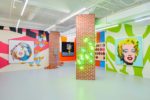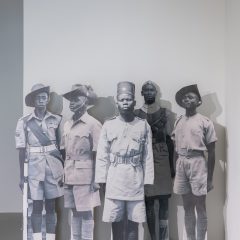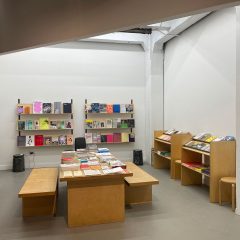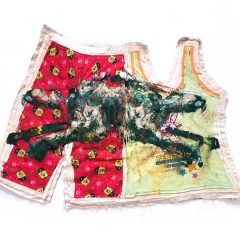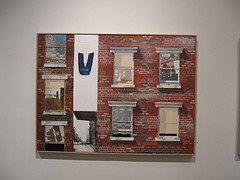
Jeans Hangin’ Out Back
In a funny confluence of art-world serendipity, I really did visit Walter Cade III’s solo exhibit, Prancing Reflections, Strutting Shadows, at Sande Webster Gallery the same day I visited Ann-Marie Lequesne’s exhibit, After the Fact, at Rosenwald-Wolf Gallery at the University of the Arts (see Roberta’s excellent post on Lequesne here). My only regret about this pairing was that I was unable to add Matt Fisher mini-exhibit at the 816 Gallery at UArts to the mix–the gallery was closed.
Cade, who in the late 60s and early 70s showed at the Whitney Museum and the Corcoran, is making paintings about windows, which of course are paintings about people.
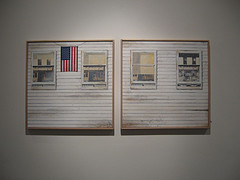
Reflections of Yester Year/Pride & Glory, 20 x 20 each
But my real point is about what’s on the surface of things. Cade’s paintings are not totally paintings. They are mixed media–media that raise issues about reality. Each of his bricks is dimensional and textured; his stucco is sandy and pretty similar to real stucco; his windows include real bits of lace, real screening; his interiors and sometimes the shaded windows look like computer-printed images; his posters stuck to the walls are bits of paper collaged on; an American flag suspended on a rope is a real little American flag, hung on a piece of string.
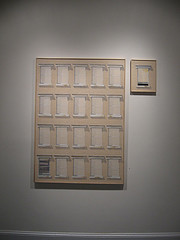
Shadows of Andy Warhol, Reflections of Jackie Robinson
To call this trompe l’oeil is a little misleading; it’s more like model-making and miniaturizing. The craft and outsider approach devotes equal attention and detail to every part of the image.
But the content is serious and the final products easy to look at, with the windows evoking identity, community, individuality, privacy, openness and more.
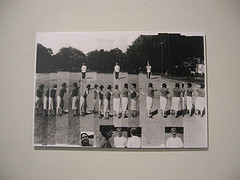
London Fields Execution
26/xx/03 2 p.m. Temperature: 22 degrees c.
Sunny, high clouds
I’m sorry I lost some of the information on the title of this piece, because I really loved the use of detail to impart a false aura of reality
So when I came from that into the LeQuesne exhibit–subtitled Re-enactments of a small photograph (supposedly) taken at the execution of the Emperor Maximilian in Mexico on June 19, 1867–I didn’t have to shift my mind all that far, in spite of the division between her cool use of tertiary imagery to explore the lie of imagery and Cade’s desire to hold fast to the illusion of reality.
LeQuesne staged reenactments of the scene depicted in a “historical” photo of the excecution. She manipulated the photos she took of her reenactments, and then she also created retablos of each of her photographs.
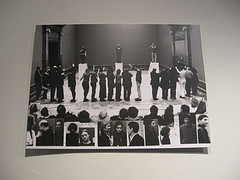
Tate Execution IV
25/4/01 8:00 p.m. Temperature: 19 degrees C.
Central Heating
Among the things that I found interesting in LeQuesne’s work was how the shift from one venue to another changed the content of the piece–say the subway platform versus Rocky’s triumphant Art Museum steps, and also the variations on the percentage of unique subjects within an image. At some point, the multiples of a single subject became so obvious that the illusion of a crowd and multiple gunmen no longer held. But until that point was reached, multiples worked just fine–as members of a community, individuals, people in uniform.
I also found it interesting that two artists working in two extremely different–actually opposite–streams of art-making with such different intent could have so much in common in their ultimate bigger message.
Here is my Cade set on Flicker, my LeQuesne set, and Roberta’s LeQuesne set.


